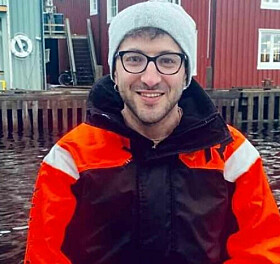
Queer people are exposed to far more violence than straight people
Norway is probably one of the safest countries in the world. But it isn't equally safe for everyone.
Figures from what is called the Norwegian National Crime Survey were presented recently during Arendalsuka 2023. They show that:
Fewer than 5 per cent of people in Norway are afraid of being subjected to burglary or theft, or of being exposed to any form of violence.
Most Norwegians feel safe in everyday life.
But for queer individuals the data look different.
Half of queers experience offences
“Queer people are consistently less trusting of people in general than others in society are,” said Mette Løvgren. She is the project manager for the Norwegian National Crime Survey.
“Queer individuals worry about violent crime, sexual violence and hate crime in particular,” she says.
Researchers at OsloMet University’s NOVA institute have investigated people’s reports of the offences they were exposed to in 2022. They found that one in three heterosexual individuals experienced a violent incident during the last year that they believe was a crime.
Half of queer individuals experienced a criminal offence in 2022.
Twice as much violence
Not only did more queer people have offences committed against them, Løvgren said, but whereas heterosexuals mostly experienced one incident each, queer individuals more often experienced two, three or four offences each.
- Queers were subjected to incidents like pickpocketing or bicycle theft slightly more often than heterosexuals last year.
- They were pushed or shaken more than twice as often.
- Queer people were subjected to threats almost three times as often as heterosexuals last year.
- Six times as often they were subjected to rape.
- Queers report having been subjected to repeated harassment from the same person over time more than three times as often as heterosexuals.
- Overall, queer people were victims of violence more than twice as often as heterosexuals last year.
When the researchers ask people what they fear, the figures in the National Crime Survey show that queers are afraid of violence in particular.
Many are also afraid of threats and rape.
All in all, Løvgren believes the crime survey paints a rather bleak picture of how queer people are doing in Norway.
Underlying fear
Arne Grønningsæter, a researcher for the independent social science research foundation Fafo, lives his life as a queer and was asked to comment on the figures that appear in the National Safety Survey.
“I’ve been openly gay for as long as I can remember,” he says.
“But when I walk down the street with the man I've lived with for 40 years, we still automatically pull our hands apart if we bump into other people.”
“We gays still carry an underlying fear,” says Grønningsæter.

Might have underestimated the fear
The Fafo researcher believes that queer people themselves have often underestimated their fear of harassment – himself included.
“We wanted things to move forward so badly.”
“And we could see that they were moving forward. But maybe as researchers, we’ve been so concerned with giving a pretty picture of how much things have progressed for queers that we underestimated the problems that they still face in society,” he says.
Just over a year ago, terrorist Zaniar Matapour stepped off a tram in central Oslo and started shooting at a crowd that included many queers. Grønningsæter believes that the shootings at the London Pub and Per på Hjørnet pub & bar in Oslo might have opened the eyes of many queer people in Norway.
Greater queer visibility
Stephen Adom is the general manager of Skeiv Verden (Queer World) Oslo and Viken. He was also invited to comment on the survey figures.
“With every step of progress, queers have also become more visible to the world,” Adom said at Arendalsuka.
“Some people have the impression that there are more queer and transgender people now. But the truth is that more people are now daring to come forward. As a result, more people in society might for one reason or another feel threatened by us.”
Adom believes that many of the crimes queers are subjected to are either not reported or simply dismissed if they are reported.
In the latest National Safety Survey, just over 23 000 people who reported that they are heterosexual participated. By contrast, just shy of 1000 people who stated that they are queer took part. The response rate in the survey was around 38 per cent. We’ll see the final report from the survey this autumn.
You can find more information at the National Crime Survey website.
------
Translated by: Ingrid P. Nuse
Read the Norwegian version of this article on forskning.no
------






































